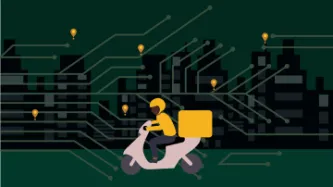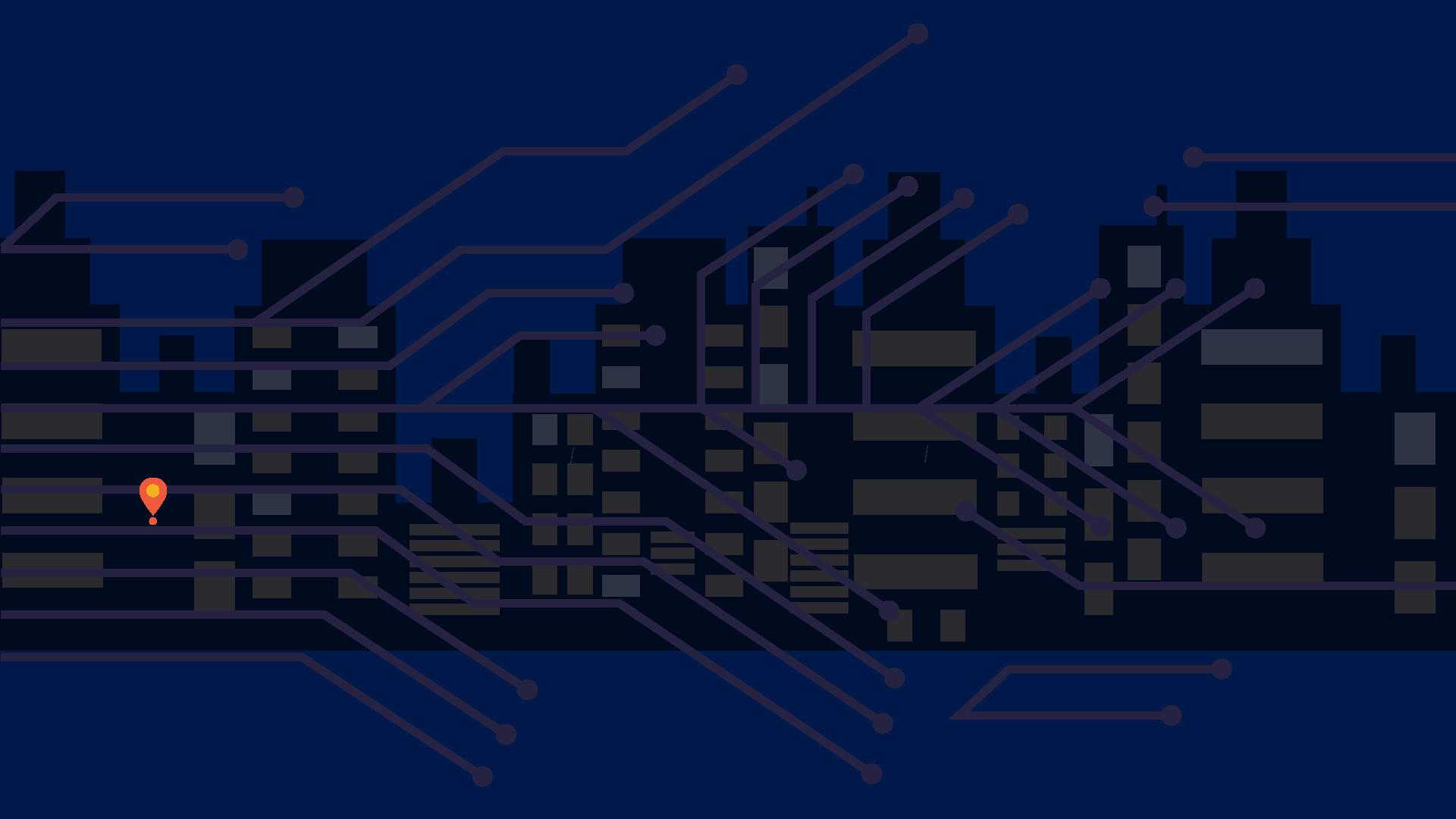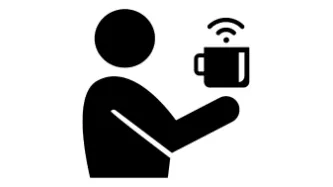Search
Content type: Advocacy
UPDATES:The Platform Work Directive (PWD) became law in October 2024. Member States have until December 2026 to implement its provisions into their national law. The final text of the PWD provides the following:A person performing platform work cannot be fired or suspended based on a decision made by an algorithm or automated decision-making systems.Platforms must provide upfront information, in "clear and plain language", about their use of automated decision-making systems.Platform workers…
Content type: Long Read
Imagine your performance at work was assessed directly from the amount of e-mails sent, the amount of time consumed editing a document, or the time spent in meetings or even moving your mouse. This may sound ludicrous but your boss might be doing exactly that. There are more and more stories emerging of people being called into meetings to justify gaps in their work only to find out their boss had been watching them work without their knowledge.
The Covid-19 global pandemic has reshuffled the…
Content type: Video
Update: Pa has since won a settlement from UberPlease note the views expressed in the video are interviewee's own and do not necessarily reflect the views of PI.Pa used to work for Uber. After some time, Uber started asking him to submit a picture of himself to the platform to confirm it was indeed him who had completed the job. However, with time, the frequency of the requests increased. In the beginning, the requests for a picture only happened once a week, but as time went by Pa told us that…
Content type: News & Analysis
To add your voice to the letter below, which we'll be sending to gig economy companies like Uber, Deliveroo, Bolt, Amazon Flex, Just Eat, Free Now, and Ola, sign the Managed by Bots petition. (PETITION IS NOW CLOSED, SEE UBER'S RESPONSE TO OUR CAMPAIGN LETTER. SEE DELIVEROO'S RESPONSE.
Worker Info Exchange (WIE), the App Drivers and Couriers Union (ADCU), Privacy International (PI) and other civil society organisations* are today writing to you with urgent questions about the exploitation of…
Content type: Long Read
What if your boss was an algorithm? What would you do if your employer suddenly fired you or reduced your pay without telling you why? And without being willing to give you a reason when you ask for one?
This is not science fiction or some far-fetched reality. Millions of people worldwide are working in the gig economy sector for companies like Uber, Deliveroo, Bolt, Just Eat… And this could be the future of work for people working outside the gig economy, as surveillance technologies are…
Content type: Video
Please note the views expressed in the video are the interviewee's own and do not necessarily reflect the views of PI.
Driver X (he wishes to remain anonymous) has been working for Uber for five years. After working for Uber for two and half years, he suddenly received a message telling him that his account had been temporarily suspended and asking him not to call Uber while the investigation was pending. He was baffled, as he had an excellent record and rating, with plenty of positive…
Content type: Video
Please note the views expressed in the video are the interviewee's own and do not necessarily reflect the views of PI.
In his interview, Alexandru told us that he started to work for Uber in 2018. Despite being aware of negative experiences of others, he felt that everything was running smoothly, and for a while, Uber met his expectations.
However, in 2021, he received a notice from Uber that they had noticed fraudulent activity associated with his account. He went on social media and…
Content type: Examples
A nationwide US study plans to examine the impact on employer surveillance of the shift of workers from on-site office environments to working in their homes. The authors intend to highlight worker (dis)comfort and concerns.
Source: https://covid19research.ssrc.org/grantee/how-covid-19-is-changing-workplace-surveillance-american-workers-experiences-and-privacy-expectations-when-working-from-home/
Writer: Jessica Vitak and Michael Zimmer
Publication: Social Science Research Council
Content type: Examples
As working from home expands, employers are ramping up surveillance using the features built into software such as Microsoft Teams and Slack, which report when employees are active, or requiring employees to attend early-morning video conferences with webcams switched on. In early 2020, PwC developed a facial recognition tool to log when employees are away from their home computer screens.
Source: https://www.theguardian.com/world/2020/sep/27/shirking-from-home-staff-feel-the-heat-as-…
Content type: Examples
The US company Hubstaff, which provides monitoring software to employers, says its UK customer base quadrupled between February and October 2020. The software tracks workers’ hours, keystrokes, mouse movements, and website visits. The Chartered Institute of Personnel and Development warns that workplace surveillance can damage trust.
Source: https://www.bbc.co.uk/news/business-54289152
Writer: Lora Jones
Publication: BBC
Content type: Examples
A growing number of companies - for example, San Mateo start-up Camio and AI startup Actuate, which uses machine learning to identify objects and events in surveillance footage - are repositioning themselves as providers of AI software that can track workplace compliance with covid safety rules such as social distancing and wearing masks. Amazon developed its own social distancing tracking technology for internal use in its warehouses and other buildings, and is offering it as a free tool to…
Content type: Examples
As part of efforts to make returning to campus safer, US universities are considering or implementing mandates requiring students to install exposure notification apps, quarantine enforcement programs, and other unproven new technologies, risking exacerbating existing inequalities in access to both technology and education. In some cases, such as Indiana University, UMass Amherst, and the University of New Hampshire, universities are requiring students to make a blanket commitment to install…
Content type: Examples
Numerous companies are repurposing their body monitors, asset trackers, and electronic ankle monitors and marketing them to the newly-created market for strap-on surveillance bracelets to enforce quarantine and social distancing including companies such as AiRISTA Flow. Redpoint Positioning Corporation, Israel-based SuperCom.
https://theintercept.com/2020/05/25/coronavirus-tracking-bracelets-monitors-surveillance-supercom/
Writer: Sam Biddle
Publication: The Intercept
Content type: Case Study
You have the right to decent standards and dignity at work, and the right to join a union to protect yourself and your rights. That might come as a shock to Amazon - who have been using Covid-19 as a reason to undermine those rights.
Chris Smalls, an organiser and now former Amazon warehouse assistant manager, led a walkout at a New York City facility and within days he’d been fired under a dubious pretext.
The walkout was to ensure workers’ safety - they were asking for the warehouse to be…
Content type: Examples
The rush to incorporate greater safety from the coronavirus is bringing with it a new wave of workplace surveillance as companies install tracking software to determine who may have been exposed and which areas need deep cleaning if an employee gets infected; monitor social distancing; and use Bluetooth beacons embedded in badges to locate employees.
Companies are also installing thermal cameras to take employees' temperature as they enter the workplace or public area. Companies are also…
Content type: Examples
Amazon has spent $10 million to buy 1,500 cameras to take the temperature of workers from the Chinese firm Zhejiang Dahua Technology Company even though the US previously blacklisted Dahua because it was alleged to have helped China detain and monitor the Uighurs and other Muslim minorities.
The cameras work by comparing a person’s radiation with a separate infrared calibration device and uses face detection technology to make sure it is looking for heat in the right part of the subjects…
Content type: Examples
To speed up daily temperature checks, Amazon has installed thermal cameras to screen workers for coronavirus symptoms in its warehouses around the world. Cases of COVID-19 have been reported at more than 50 of the company's US warehouses. Thermal cameras will also replace thermometers at staff entrances to many of Amazon's Whole Foods stores. Workers have claimed it is almost impossible to socially distance inside the warehouses.
Source: https://www.bbc.co.uk/news/technology-52356177
Writer:…
Content type: Examples
As employees shift to working from home, their employers are buying and installing software to monitor them in their new location. Companies such as InterGuard, Time Doctor, Teramind, VeriClock, innerActiv, ActivTrak, and Hubstaff provide a combination of screen monitoring and productivity metrics that managers can check to ensure staff are being productive. In some cases, employers ask staff to stay logged into a video call throughout the work day; others insist on constant status updates.…
Content type: Examples
New workplace technologies are generating mountains of data on workers despite a lack of clarity over how the data is used and who owns it. In offices, smart badges track interactions and sensors track fitness and health; in trucks sensors monitor drivers' performance in the name of safety. In the US state of Illinois, between July and October 2017 26 lawsuits were filed by employees alleging that their employers had violated the state's Biometric Information Privacy Act, which requires a…
Content type: Examples
In November 2018, worried American parents wishing to check out prospective babysitters and dissatisfied with criminal background checks began paying $24.99 for a scan from the online service Predictim, which claimed to use "advanced artificial intelligence" to offer an automated risk rating. Predictim based its scores in part on Facebook, Twitter, and Instagram posts - applicants were required to share broad access to their accounts - and offered no explanation of how it reached its risk…
Content type: Examples
In December 2018 Walmart was granted a patent for a new listening system for capturing and analysing sounds in shopping facilities. The system would be able to compare rustling shopping bags and cash register beeps to detect theft, monitor employee interactions with customers, and even listen to what customers are saying about products. The company said it had no plans to deploy the system in its retail stores. However, the patent shows that, like the systems in use in Amazon's cashier-less Go…
Content type: Examples
Behind the colourful bicycles and games rooms, Silicon Valley tech giants operate a strict code of secrecy, relying on a combination of cultural pressure, digital and physical surveillance, legal threats, and restricted stock to prevent and detect not only criminal activity and intellectual property theft but also employees and contracts who speak publicly about their working conditions. Apple has long been known for requiring employees to sign project-specific non-disclosure agreements (NDAs…
Content type: Examples
In May 2014 the Polish Ministry of Labor and Social Policy (MLSP) introduced a scoring system to distribute unemployment assistance. Citizens are divided into three categories by their “readiness” to work, the place they live, disabilities and other data. Assignment to a given category determines the type of labor market programs that a particular person can receive from the local labor offices (e.g. job placement, vocational training, apprenticeship, activation allowance). The Panoptykon…
Content type: Examples
Automated systems such as the personality test developed by Massachusetts-based workforce management company Kronos are increasingly used by large companies to screen job applicants. To avoid falling foul of regulations prohibiting discrimination against those with mental illness, often the questions are phrased in intricate ways that are harder to game - but also harder to answer without self-incrimination. It's estimated that as many as 72% of CVs are never seen by human eyes; instead, they…
Content type: Examples
In the 2014 report "Networked Employment Discrimination", the Future of Work Project studied data-driven hiring systems, which often rely on data prospective employees have no idea may be used, such as the results of Google searches, and other stray personal data scattered online. In addition, digital recruiting systems that only accept online input exclude those who do not have internet access at home and must rely on libraries and other places with limited access and hours to fill in and…
Content type: Examples
In 2016 the Dutch Data Protection Authority (AP) ruled that the Personal Data Protection Act prohibits companies from monitoring their employees' health via wearables, even when employees have given their permission. The ruling concluded the AP's investigation into two companies; in one of them, wearables even gave the employer insight into its employees' sleep patterns. The AP argued that employers are free to give wearables as gifts, but that the power relationship between employer and…
Content type: Examples
In 2015, the Swedish startup hub Epicenter began offering employees microchip implants that unlock doors, operate printers, and pay for food and drink. By 2017, about 150 of the 2,000 workers employed by the hub's more than 100 companies had accepted the implants. Epicenter is just one of a number of companies experimenting with this technology, which relies on Near Field Communication (NFC). The chips are biologically safe, but pose security and privacy issues by making it possible to track…
Content type: Examples
In 2017, Uber began a programme experimenting with using psychology and social science insights to influence when, where, and how long its drivers work. Among other techniques, Uber auto-loaded the next fare to encourage the driver equivalent of binge TV-watching; reminded drivers when they're close to their earnings targets to keep them from logging off; and used game-style graphics and small-value awards to keep drivers at the wheel. The company also had male managers adopt female…
Content type: Case Study
Gig economy jobs that depend on mobile applications allow workers’ movements to be monitored, evaluated, and exploited by their employers.
The so-called “gig economy” has brought to light employers’ increasing ability and willingness to monitor employee performance, efficiency, and overall on-the-job conduct. Workplace surveillance of gig economy workers often happens without employees’ awareness or consent. This is especially evident in the app-based gig economy, where apps act both as an…
Content type: News & Analysis
When it comes to tackling corruption, we need to critically engage with the role of technology. One technology in particular is biometrics, a technology that identifies and stores on a database the identity of an individual through some physical characteristic, usually fingerprints or an iris scan. Biometrics is increasingly being used in ID and voter registration schemes. It is a technology that raises privacy and data protection issues but notwithstanding…















